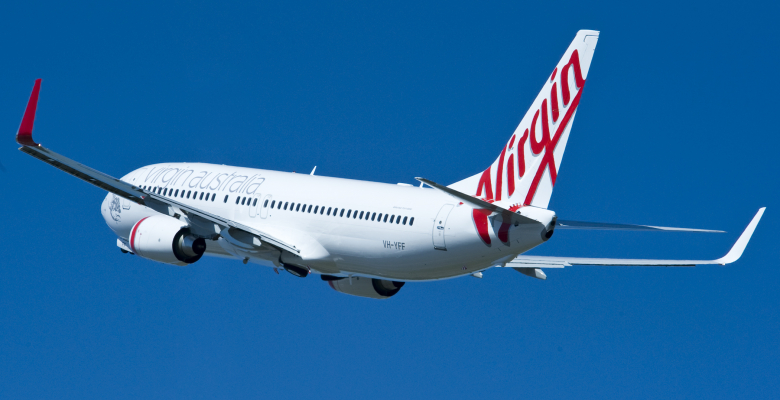
- Group revenue of $5 billion, an increase of 124% over FY22.
- Underlying Earnings Before Interest and Tax (EBIT) of $439 million, a margin of 8.8%. Virgin Australia’s execution of its multi-year transformation plan continues and is fundamental to this achievement.
- Statutory Net Profit After Tax (NPAT) of $129 million, the first profit achieved in 11 years.
- Eligible frontline team members have received 6.5% of their salary in additional bonuses over a 12-month period, total of $26 million in bonuses paid to frontline staff in FY23. All team members also receive $1,000 travel credit every year.
- First Boeing 737-8 joined Virgin Australia fleet, with another 7 to be delivered during FY24. A further 25 Boeing 737-10 aircraft planned for delivery from FY25, anchoring to our 2030 greenhouse gas emissions intensity reduction target of 22%.[1]
- Boeing 737 fleet will undergo a cabin refurbishment estimated to cost approximately $110 million.
- In FY23, over 1,800 frontline staff hired, total team headcount reached 7,340 and an additional approximately 1,500 frontline staff to be hired over FY24.
- Velocity Frequent Flyer members reached 11.5 million.
- Short haul international routes commenced including Tokyo, Queenstown, Samoa, and Vanuatu.
10 October 2023: Virgin Australia returned to profitability for the first time in 11 years, reporting statutory NPAT of $129 million. Revenue more than doubled compared to the prior year to $5 billion as the company responded strongly to increased customer demand following COVID-19. Underlying EBIT was $439 million, representing a margin of 8.8%.
Virgin Australia’s Airline business (which includes domestic, international, and regional and charter flying) recorded revenue of $4,873 million, an increase of 126% due to increased flying activity. Underlying EBIT was $362 million, a margin of 7.4%.
Loyalty business Velocity recorded revenue of $330 million, an increase of 68%, with strong member growth through the year, reaching a record 11.5 million members. Underlying EBIT of $77 million represented a margin of 23.4%.
Record travel demand for leisure and the return of SME customers to pre-Covid levels alongside a slower but important return of corporate travellers, enabled significant revenue recovery. Efficiency initiatives delivered a significant increase in profitability in spite of higher fuel prices. Virgin Australia continues to see healthy demand as customers prioritise travel in the face of cost-of-living pressure.
Commentary from Virgin Australia CEO Jayne Hrdlicka:
“These results are an important milestone for Virgin Australia. It has been 11 years since Virgin Australia returned a profit, and our results signal that the transformation of Virgin Australia is progressing well. We have a long-term commitment to transformation and are only part-way through this multi-year journey,” Ms Hrdlicka said.
“By creating a systemically lower cost base and a conservative balance sheet as well as investing heavily in technology and our frontline, we are well positioned for the future.
“Our investment in frontline transformation continues, and is designed to boost capability, customer experience and operational efficiency. Our recent announcement of a $110m cabin upgrade, arrival of the first of our new 737-8 aircraft, market leading baggage tracking app and Rapid Rebook technology launch all help us to create experiences our guests love.
“Value and choice are core to our business and as the continuing rise in cost-of-living impacts household budgets, we believe we are well positioned to continue to provide customers with the best value in the market.”
Commentary from Virgin Australia CFO Race Strauss:
“Our balance sheet is now considerably stronger and the cost base of the business has significantly improved from recent years. Future transformation plans put us in a good position to manage cost headwinds and continue to improve our business,” Mr Strauss said.
“Virgin Australia is now in a very strong capital position, with total debt including leases now $2.3 billion and over $1bn of cash on balance sheet, providing the platform for future investment in transformation and growth. Our transformation plan is well underway and has set up the business for the future.”








